Fragrant geranium: description, types and cultivation
Fragrant geranium or pelargonium is a perennial herb that belongs to the Geraniev family. The name of this plant comes from the Greek word that translates as crane. Apparently, this is due to the fact that the fruits of the plant resemble the beak of these birds. Geranium was discovered in South Africa at the Cape of Good Hope and later brought to Europe. Fragrant geranium is one of the most common indoor and ornamental plants in our region, very often you can still find the popular name - kalachiki. It gained popularity back in Soviet times, then on almost every windowsill one could find globular inflorescences of red, white or pink. Recently, the popularity has subsided a little, but this did not prevent the Fragrant Geranium from remaining one of the most beloved plants of the people. In addition, many new varieties have appeared on the market with all kinds of petal colors and plant heights.
Content:
Geranium species
There are about 250 species of this plant.
They are also subdivided into groups:
- Zonal.
- Ivy.
- Royal.
- Angel.
- Unique.
- Fragrant.
- Succulent.
Geranium is zonal.
One of the most common types in both growing indoorsand in gardening.
- This plant has straight stems, and the height can be up to 90 cm.
- The leaves are round in shape and are placed on pubescent petioles densely located on the stems. The color of the leaves has different green shades, located in a semicircle from the center of the leaf to its edge.
- The colors are separated by peculiar zones, hence the name of this species.
- Zonal geranium blooms profusely and for a long time, which attracts attention. It can often be found on balconies and window sills of apartments, and on decorative flower beds.
- The shape and color of flowers of this species also attracts attention, they come in various shades from white to red-crimson, collected in dense inflorescences on a high peduncle.
- It blooms in indoor conditions for almost a whole year, in flower beds and in gardens from spring to late autumn.
- Zonal geranium is very unpretentious, and lends itself well to crossing.
- To date, more than 70,000 varieties of this species have been bred. With various colors and shapes of flowers and leaves.
Royal geranium.
- One of the most beautiful species of geranium and the most demanding.
- It blooms with very beautiful flowers with wavy edges in various colors and shades.
- Its leaves are rounded, jagged and rough, located on pubescent cuttings.
- For good growth and constant flowering, royal geranium requires special special care.
- She does not like direct sunlight and needs constant high humidity.
- This is one of the most beloved types of gardeners and florists, so every year new varieties of royal geraniums with variegated petals appear.
- The flowers of this plant are collected in a bunch, which can reach a width of up to 25 cm, and are located on a long peduncle.
- The plant itself can grow up to 80 cm in height.
- The flowering of the royal geranium differs from the others in that in the lower part of the petal, almost at the center, there is a spot that is contrastingly different in color from the petal itself.This, combined with the doubleness of the petal, makes the plant royally beautiful.
Fragrant geranium.
- This type of geranium is very common in indoor floriculture, although they have small and inconspicuous flowers.
- They are distinguished by beautiful leaves, bright green color.
- The leaves are carved and have a varied pleasant scent.
- This variety is prized for its antibacterial and viral properties found in the leaves.
- Very often, these types of home geraniums were placed in different rooms, which helped to avoid colds and various infections.
Meadow geranium.
- This type of geranium is also called meadow crane.
- In nature, this plant is found in vast territories from Spain to China.
- Her favorite and convenient growing places are the edge of a forest, meadows, steppe, a clearing of a humid forest.
- The plant reaches a height of 80 cm.
- The stems of the meadow geranium are straight and there are quite a few of them. The stems branch upwards.
- Green leaves are rounded and slightly pubescent. They are kidney-shaped and incised, creating a feather-like shape.
- The lower leaves are collected in a rosette and have 7 cuts, the leaves on the stems have 5 cuts, and the upper leaves are only 3.
- Meadow geranium blooms in bluish-purple color, and the flowers open wide. The flowering period takes place throughout the summer months.
Forest geranium.
- This type of geranium can be found very often in the meadows of Europe and Asia.
- It can also be found in dense thickets of bushes and in the glades of shady forests.
- This type of geranium grows in the form of small shrubs, the stems of which grow in different directions.
- Usually they do not grow one by one, but gather in whole glades.
- The plant can be up to 80 cm tall and has a strong root system.
- Stems are slightly pubescent and few in number.
- The leaves are green and rounded, growing on long pubescent petioles.
- The upper and lower leaves differ in the number of lobes into which they are divided.
- Forest geranium blooms with lilac or purple flowers in mid-summer for 3 weeks.
Himalayan geranium.
- This variety of geranium has large flowers, much larger than that of other varieties, therefore it is also called large-flowered geranium.
- It grows in the Himalayas region, hence the name. Occurs in open, well-lit glades.
- It grows in the form of a bush, has pubescent stems, can reach a height of 60 cm.
- The leaves are rounded, the diameter can reach 10 cm. The leaves are unevenly divided into 5 parts.
- The flowers are large, up to 5 cm in diameter, have a very beautiful color of blue, blue or purple. The flowering period is very long, which attracts gardeners and landscape designers.
Geranium is great.
- This is one of the hybrid species, obtained by crossing two varieties of Georgian geranium and flat-leafed geranium.
- This variety belongs to perennial plants.
- It grows quickly, the height of the plant can reach 50 cm.
- The leaves are green, rounded, toothed, divided into 5 parts, leaf petioles are pubescent.
- A big plus of this geranium variety is that in the fall the leaves turn orange or brick-red, it looks very beautiful on any flower bed.
- It blooms in a light purple color from mid-summer.
- Prefers sunny, open areas, and well-drained soil.
The geranium is blood-red.
- It is also a perennial variety of geranium.
- It grows in clearings in light forests, in thickets of bushes and on the southern slopes.
- The stems of the plant are straight and slightly branched, at the base they are red in color.
- It can reach a height of 70 cm.
- Rounded leaves on pubescent cuttings.
- It blooms with red flowers from early to mid-summer.
- The fruits ripen in the form of a capsule, which is then divided into single seeds.
- In the fall, the lower leaves turn red, while the upper ones remain green, this creates a unique pattern that looks spectacular in any garden.
- This type of geranium can live with annual flowering for 15 years.
Ash geranium.
- It grows in the south of Europe and the Caucasus, also in the southeast of Asia.
- This is a perennial low plant. The height of the stems can reach as little as 15 cm.
- This is one of the low-grade geranium species. Leaves are rounded, up to 6 cm in diameter on petioles.
- Divided into 3–7 lobes with serrated edges. The color of the leaves is an unusual gray-green color.
- It blooms in lilac-pink color from mid to late summer.
- Ash geranium prefers well-lit places, soil that is well-drained and rich in lime.
- The place of growth in winter should not be with an excess of moisture, otherwise the plant will disappear.
Presented here several types of geraniumwhich are used both as medicines and as ornamental plants. You don't need to talk about the popularity of the flower, because many people have heard about the geranium or, as it is more often called, the kalachik, and almost everyone has such a plant at home.
Care and reproduction of geranium
In indoor conditions, fragrant geranium can grow on windowsills even from the north side, the main thing is that the lighting is good, without additional shade.
Since the shading of the plant will slow down its growth and flowering may not be, but the shoots, aiming for the sun, will be very long, which will ruin the decorative appearance of the flower. Therefore, you need to choose a sufficiently bright place.
Plant care tips:
- Geranium is not afraid of direct sunlight and, on the contrary, will feel great in the sun.
- Also, do not move the pot from room to room, as this can cause plant disease. And if there is a balcony or terrace, then for the summer it is better to take the flower pot out into the open air.
- The temperature regime for the summer period is 25-30 degrees, but in winter it is better to keep the flower in a cool place so that the temperature does not rise more than 15 degrees, this regime will have a beneficial effect on flowering.
- Watering the flower is necessary as the soil dries, and preferably after 3 days have passed after the top layer has dried. This is due to the fact that geranium is able to accumulate moisture in itself and excessive watering can cause rotting of the roots.
- The main types of geraniums do not need high air humidity, therefore they do not require constant spraying. But if the summer temperature is very high, or dried edges appear on the leaves, then you can sometimes humidify the air around the flower.
- It is necessary to feed the plant a couple of months after transplanting. For a good dense flowering, the plant can be fed with phosphate fertilizers. Geranium is bad for organic and practically does not assimilate them.
- Also, the flower needs annual pruning. After pruning, a large number of new shoots appear, which forms a beautiful lush bush.
- Dry leaves are also trimmed as they appear. It is very important to do this with a sharp object and in no case break or tear off the leaves. Torn edges on the stem can start to rot, resulting in the death of the entire flower. Cutting off the leaf, leave a piece of the petiole on the stem and sprinkle the cut edge with charcoal.
Geranium propagates very well by cuttings.
At the end of summer or winter, the tops are cut off shoots and take root either in water or in the ground... At least 3 nodes should remain on the handle for good rooting. You can also propagate the plant using seeds, but many varieties, especially hybrid ones, can lose their varietal characteristics.
Healing properties
Fragrant geranium has many beneficial properties. Just being in a room with this plant and breathing in the scent of the leaves, you involuntarily protect yourself from viruses and colds. In folk medicine, the leaves of the scented geranium are used to treat diabetes.
Essential oils are used in many medicines.
There are also many recipes for treating a variety of viral and infectious diseases using this plant. When flowering, the plant emits an aroma that promotes good sleep, relieves fatigue. So that keep a pot of geraniums the bedroom is very healthy.
More information can be found in the video.



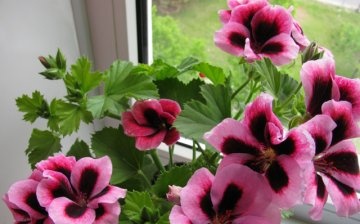
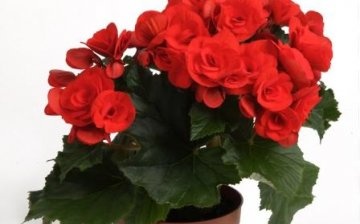
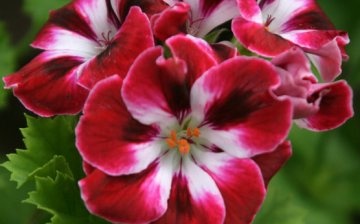
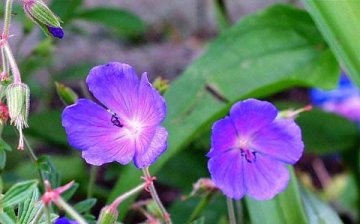
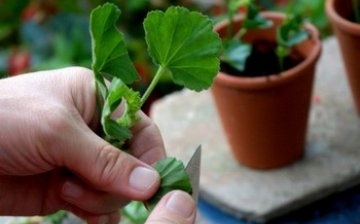
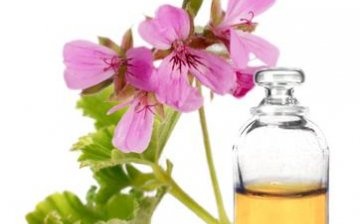






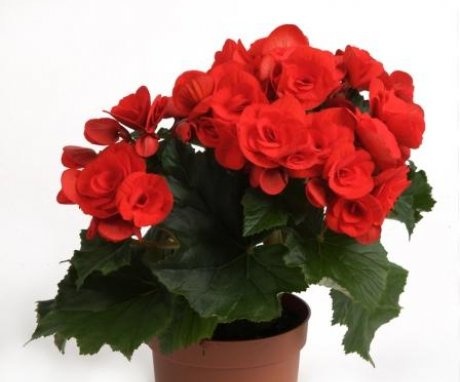
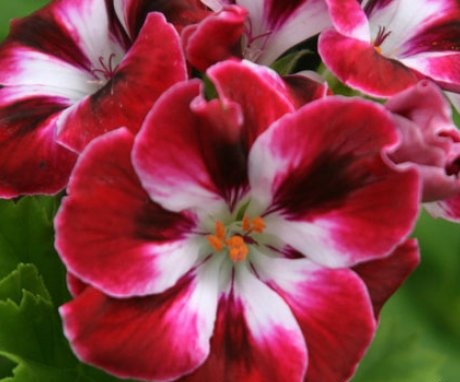
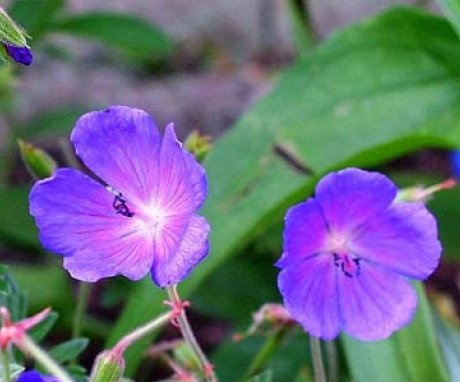
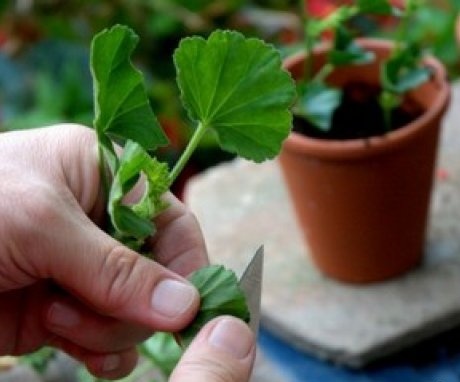
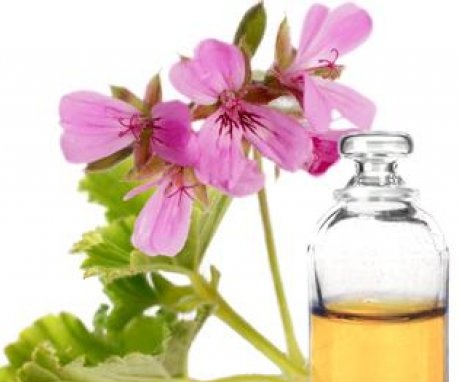
What's the beautiful! I love geraniums. But for some reason it doesn't grow with me. There is enough sun, I bought flowers of different varieties. The result is one - the stems are extended, the leaves fall off. What am I doing wrong? Maybe there is not enough top dressing? So you want a lush flowering.